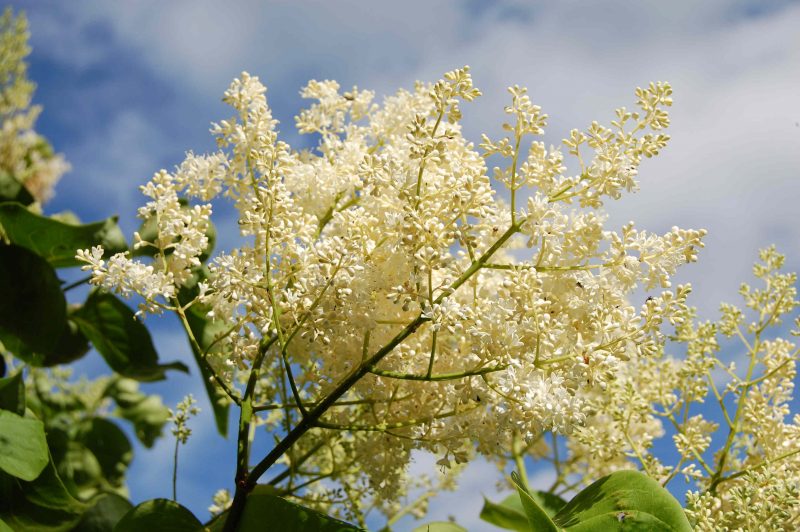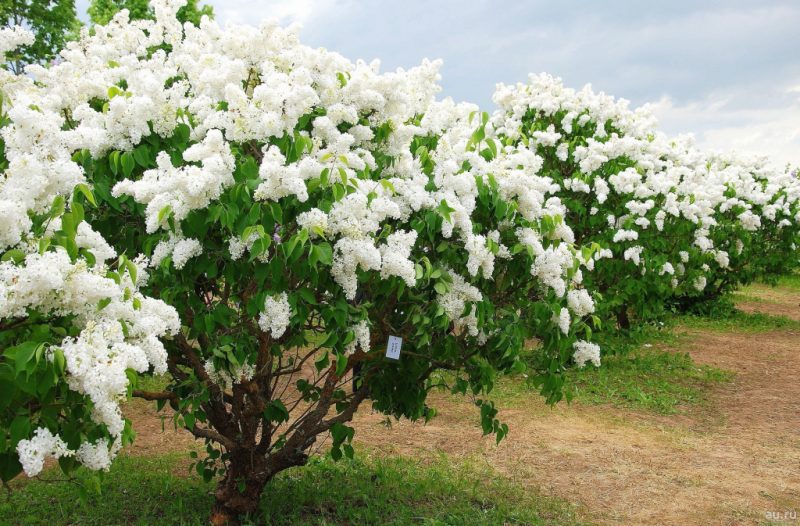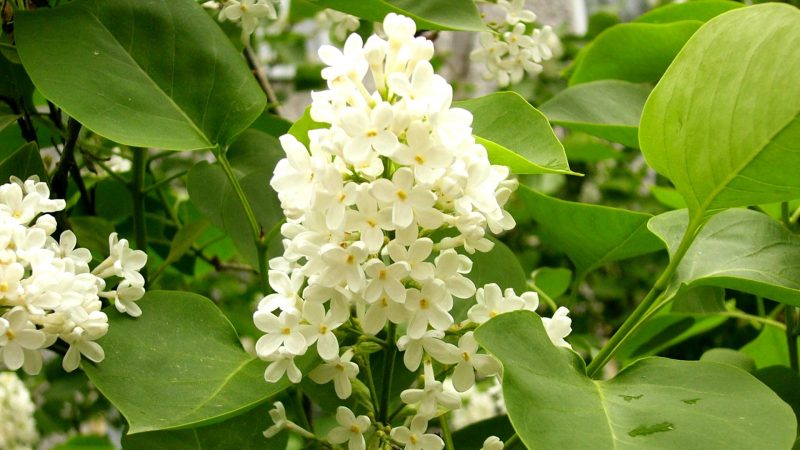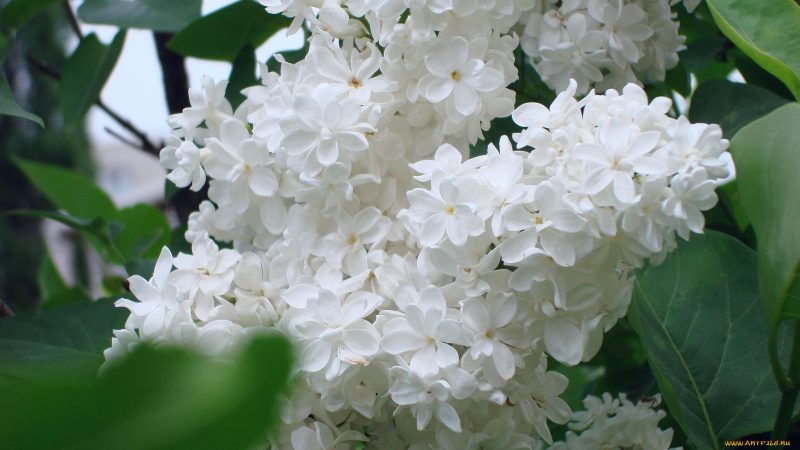The lush decorative shrub Amur lilac is widely used in Primorye, the Far Eastern region and in the Amur region. It is also easy to meet in China and the Republic of Korea. The plant does not require certain knowledge of care and is considered a long-liver.
Material Content:
Plant description
Amur lilac is a vivid representative of deciduous multi-stemmed shrubs, which often grow up to 10 meters in height. Due to the beautiful magnificent crown, the plant is very popular among owners of personal plots and often decorates gardens in central Russia.

After planting in the first stages, the lilac does not show active growth, since all its forces are directed to the formation of the root system. Initially, the root is not deep, but every year its shoots go deeper and deeper into the ground. Over time, the bush begins to grow actively and after 10 years it turns into a real tree.
- The trunk of an adult plant reaches a diameter of 30 centimeters, it is strong and quite solid. The bark has a dark gray hue, but the wood itself is light and heavy.
- The leaves of the Amur lilac are exactly the same as those of its relatives, a dark green hue. In length they grow up to 10 - 11 centimeters, the shape is ellipsoidal.
- Flowering plants begin in late June, lasts 2 weeks.
- Lilac flowers are not large, as a rule, reach a size of 6 mm. All flowers are collected in large inflorescences that envelop the entire plant. Their color is snow-white or milky. The buds are endowed with a delicate aroma, due to which they attract many honey plants.
Amur lilac does not produce fruits. Seeds are formed in the buds, which are sometimes used to propagate the plant.
Common varieties and species

Today on sale you can find only seed material of the Sudarushka variety. It is produced by the Russian company Gavrish. The bush has a lush, dense crown, cases have been recorded when the lilac grew to 10 meters in height. The plant is able to live a hundred years, shows resistance to the urban environment and can withstand frosts.
Outdoor landing
In nature, Amur lilac grows in regions with a harsh climate. Therefore, to grow a beautiful bush in your personal plot will not be difficult.

It is only necessary to adhere to certain rules:
- In order for the flowering of the bush to continue from year to year, it must be planted in well-lit areas, but there should be no winds or drafts.
- It is desirable that the root system does not have stagnation of moisture, the level of groundwater should not exceed one and a half meters.
- The soil is suitable moisture permeable. If necessary, the hole is filled with a specially prepared mixture. In no case do not plant the bush in the lowlands or in the flooded areas.
- Amur lilacs are planted in late summer - early autumn, after the bush has completely finished blooming. This will allow the plant to take root before the onset of cold weather.
Please note that the seedling needs to be planted with leaves. If the foliage crumbled, then the period for planting has passed. Have to wait for next year.
Before planting a seedling, prepare a hole measuring 50-60 centimeters. The walls of the pit should be vertical. If the soil is not fertile, then the size of the hole should be slightly increased to fill it with a fertile mixture. The seedling is planted in the evening, when the temperature drops slightly. Fill the root system so that the root of the neck remains at ground level.
Amur Lilac Care

When growing Amur lilacs, you need to follow some rules for caring for it:
- If you do not use mulch, you will need to regularly loosen the soil and remove weeds. During the growing season, loosening should be done 3-4 times. The first time the soil loosens in the spring after it has warmed up. All subsequent loosening is performed as needed.
- To achieve good growth and see beautiful flowers, the plant should be regularly watered. Sometimes you can allow a slight overmoistening. Watering is necessary during the growing season and flowering.
- Top dressing is introduced for 2 - 3 years of plant life. The first time fertilizers are applied during the period of budding. Organomineral fertilizers are best suited for these purposes. Further feeding is carried out with an interval of 3 to 4 weeks.
- In order to form a beautiful crown, the plant needs to do pruning. The bush needs thinning, shortening shoots, removing shoots.
Breeding methods

Like many other plants, Amur lilac can be propagated in several ways:
- seeds;
- bends;
- cuttings;
- graft.
Seeds must be collected in late autumn, it is desirable that on this day there was a sufficiently high humidity. Then the boxes need to be dried at room temperature and get the seeds. For stratification, they are combined with river sand in a ratio of 1: 3 and sent to a room with a temperature regime of not more than +5 degrees. For this purpose, you can use the main chamber of the refrigerator. After 2 months, the seeds can be planted in a box with steamed soil.
In order to propagate the plant by branches, it is enough to tilt the branch of the bush to the ground and fix it with a peg. Sometimes the branch is pulled by copper wire to stimulate the formation of the root system.
Possible growing problems

Amur lilac can be affected by the following diseases:
- Ring spotting. It is characterized by spots on the leaves of a yellow or light green hue.
- Mosaic. The entire surface of the sheet is covered with spots of various shapes, which leads to the drying of the damaged foliage.
- Late blight.The kidneys do not develop or open, and brown spots appear on the cortex.
- Necrosis. The tops of young shoots perish.
Use in landscape design
The shrub is known to many, which is why it has been widely used in landscaping public gardens, park areas, cottages or personal plots.
Amur lilac looks great both on its own and in group plantings.
The plant goes well with decorative trees and bushes, which helps to create magnificent landscape compositions.
Very often, lilacs are compounded with plants such as mock orange, felt cherry, tamarisk and so on. There are a lot of options for using lilacs in the design of the green area, just show your imagination a little.















